Top Tips for Selecting the Best pH Electrode
pH is a parameter that is measured in wastewater and freshwater labs the world over. One of the best ways to measure this parameter is to make use of a benchtop or handheld pH meter in conjunction with a pH probe or electrode. For some applications, you will need to use specialized probes in order to get the most accurate pH data. In this blog, I’ll walk through some specific features of pH probes that you’ll want to consider when optimizing your pH measurement!
1) Connector Type
One of the first things you should do is check your connector to ensure that your pH probe is compatible with your multimeter. For example, the MultiLab 4010-3W is compatible with any IDS (Intelligent Digital Sensor) probe with its proprietary connector, but with an adaptor, it can also use the common analog BNC-style connector.
IDS connectors are simple to install, native to the MultiLab instrumentation, and color-coded per parameter for ease of use. pH is coded as yellow so that both the connector and the screen will let you know at a glance what is currently being measured. The IDS sensors allow for temperature to be included in the single cable, meaning that the temperature and pH can be measured using the same probe.
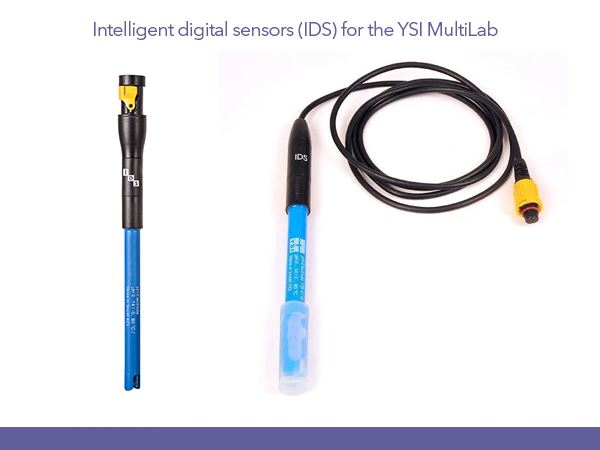
By making use of an adaptor, the MultiLab 4010-3W can also be used with any BNC analog connector. Probes that use a BNC connection are analog, meaning there is a direct mV signal from the pH probe to the instrument. BNC probes are capable of being used in any meter with a BNC connection. Since the signal is analog, many BNC-based pH probes do not include a thermistor; in this case, a separate temperature probe can be used for accurate pH measurement. If you are using another probe on your MultiLab that measures temperature, you can use a setting to ‘borrow’ the temperature from that probe in lieu of a dedicated temperature probe.
In addition, the IDS sensors can be equipped with a plug-in head and attachable universal radio modules, adding wireless functionality to individual probes. This means the sample no longer needs to be brought to the benchtop meter. Instead, the measurement with the sensor can be carried out anywhere on site, provided that the measuring meter is within the radio range.
2) Fill Solution
Something else to consider is the fill solution. This internal reference solution is the part of the pH probe that maintains a stable potential within the probe.
Many probes are filled with a gel reference, which is simple and reliable for most lab work. A gel reference is not refillable, but it remains stable over time and requires next to no maintenance. There is also no replacement of fill solution to worry about.
If you want more control over your reference solution, you can opt for a refillable probe. You can refresh refillable probes with additional reference solution as needed. Refillable pH probes will only function correctly if the level of fill solution is above the level of whatever you are measuring, so ensure you have your probe topped off to the recommended fill level.
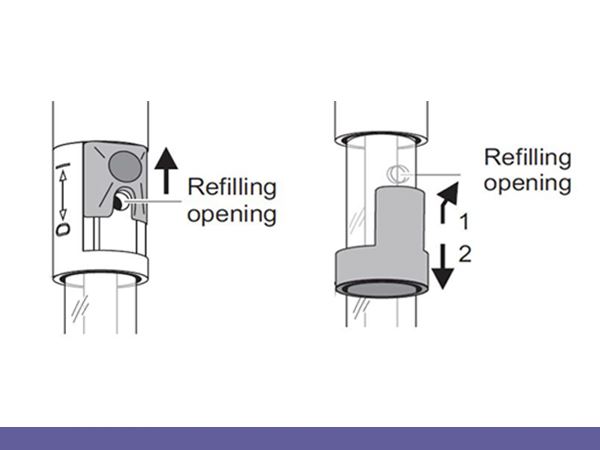
A refillable probe opening. Remember to keep the fill hole open when performing calibration or measurements!
3) Glass Membrane Shape
There are situations where the shape of your pH electrode matters. Some common shapes include the sphere, cone, and cylinder, which are similar in that they have rounded glass membranes at their terminal ends. The rounded surface allows for more surface area, and more sensitivity in measurement. Other membrane shapes are shown in the table below: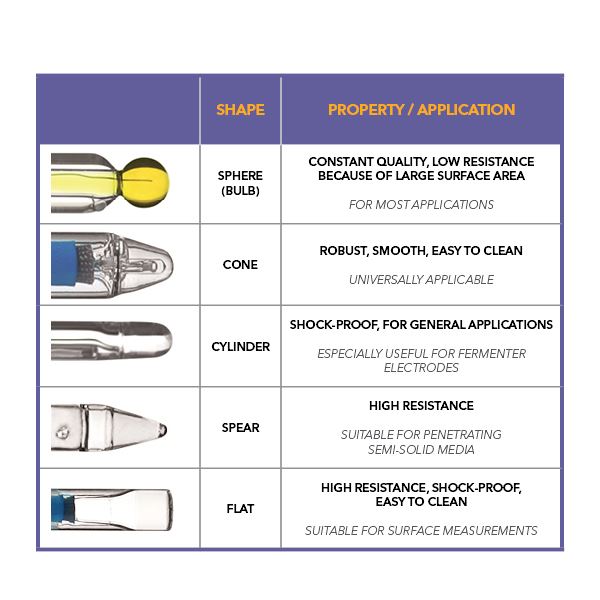
Table 1: Various membrane shapes of lab electrodes and their applications.
4) Junction Type
Let’s briefly discuss some junction types of pH probes. The junction is where the fill solution flows out, maintaining a constant potential within the probe's body. Whichever junction type your pH probe has, ensure that it is completely immersed in your sample to ensure consistent results.
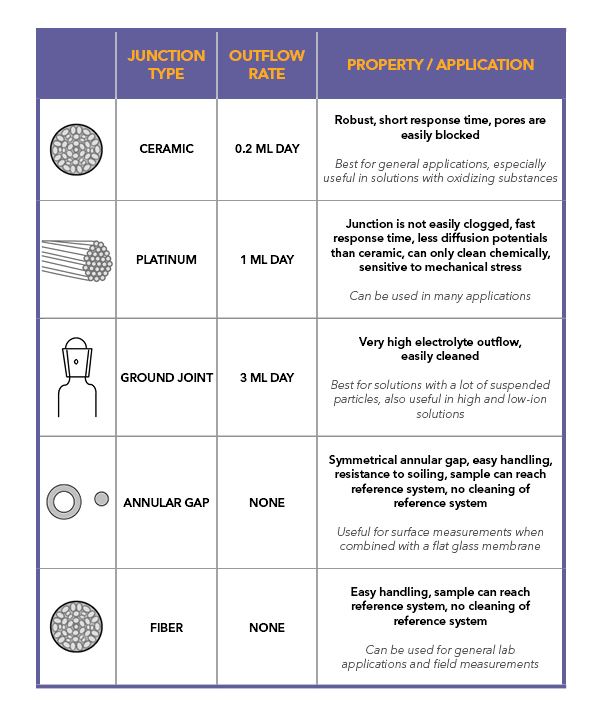
Table 2: Types of junctions used with lab electrodes and some of their properties.
A common junction type is the platinum junction. It’s a bundle of fine platinum wires that allow minute amounts of outflow, and it’s a great all-purpose junction.
Another type of junction, the Ground Joint, encircles the whole circumference of the probe. This type of junction allows for a very large amount of outflow and is designed to allow for quick discharging of fill solution when used with especially thick or particulate-heavy applications. It also performs well in applications with a low ionic strength. The Scienceline pHT-G features this junction.
A fiber junction, also known as a Pellon junction, is like a wick in an oil lamp. This design is similar to other YSI environmental products designed for fieldwork.
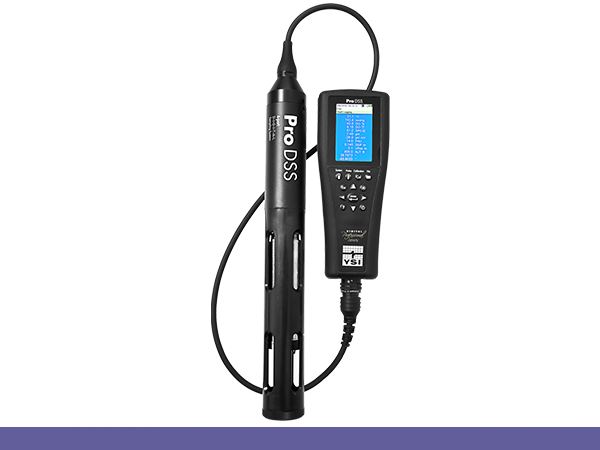
Some pH probes use a double-junction reference system. This system is robust, resistant to backflow effects, and offers a fast response time. The secondary junction means that even if a backflow event does occur, the probe will remain operational. All of our pH probes in the ScienceLine family use a double-junction reference system.
5) Temperature
Temperature is a critical element of pH measurement. The Nernst equation (shown below) indicates that temperature is one of the variables that is needed in order to determine the hydrogen ion activity in a solution. Without an accurate reading of temperature, you will not have an accurate pH value!

Many probes on the market today have integrated temperature capability. For those that don’t, be sure to have a separate temperature probe available, such as the ScienceLine Temp 135. If you are working with samples that are at a constant temperature, you can also choose to enter that temperature manually on the instrument. However, it is almost always a better idea to have a way to measure the current temperature with a probe since pH is highly dependent upon the temperature of the system being measured.
To see more about how pH is measured, please check out this webinar >>> How pH and ORP Sensors Work.
6) Replacement Interval
Do you have an older pH probe that is not measuring with the same speed or accuracy as it did before? Regular pH probe replacement is needed because the functional end of the device is a consumable. Once the outer layer of the pH probe has been used for a period of time, it develops tiny fissures on its surface, ‘shorting’ the system and leading to incorrect readings. In addition, the fill solution in any electrode, whether gel-filled or liquid-filled, has a limited lifespan. Once a pH probe has run its course, the pH probe will have to be replaced in order to get good pH readings again. For more details, download our pH Handbook. Check with Xylem on the replacement interval for your pH probes. Expect a lifespan of about a year or so for most laboratory pH probes, depending on storage conditions, maintenance, and the rigors of the application.
7) Application
YSI offers a wide variety of pH probes beyond what is featured here. Fortunately, we have a handy Electrode Selection Guide and an Electrode Application Guide available for lab electrodes. These will help you to select the most appropriate probe for your pH measurement application. It covers many of the considerations detailed above, and will help you narrow down the most appropriate probe for your situation.
If you would like to learn more about the measurement of pH, there are even more great resources on our website. Check out the pH Handbook for more in-depth information on the science behind this parameter, as well as more details on practical measurement. There are also webinars, videos, and charts available on our website.
